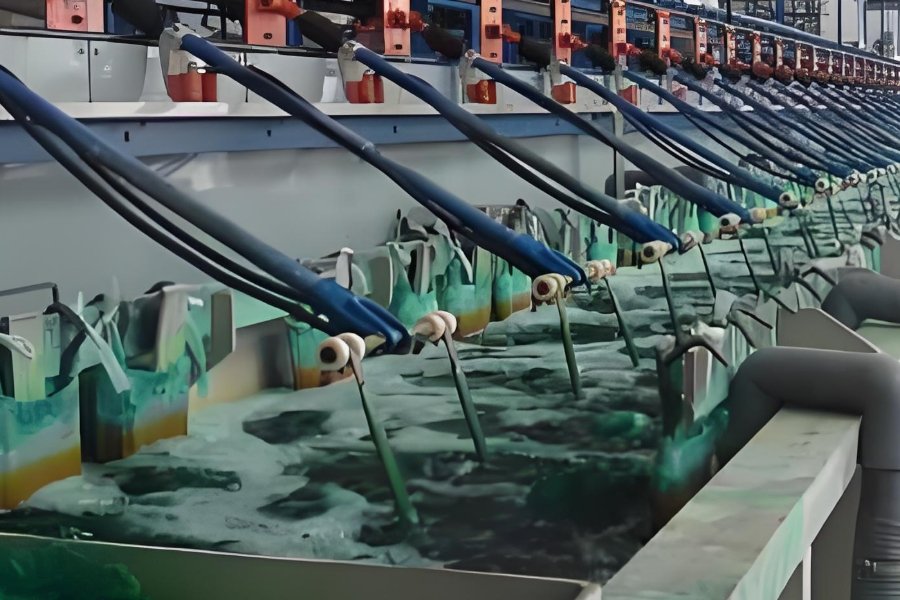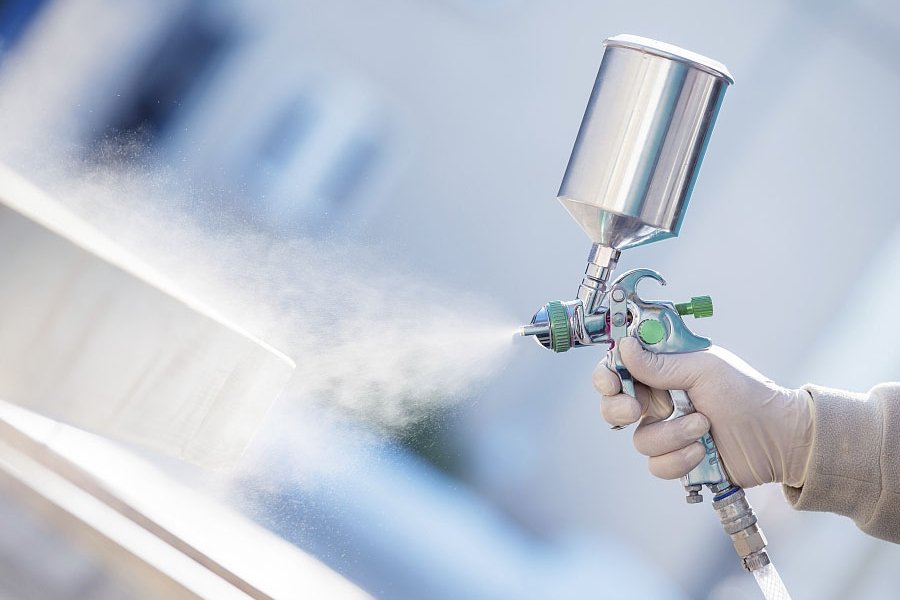Advanced Die-casting Services for Metal Parts
Start your project now
ISO 9001: 2015 Certified Processes
ISO 13485: 2016 Medical Device
IATF 16949: 2016 Automotive
AS9100 Quality Management
Faster Lead Time for Production Needs
In-Process Inspection with CMM

Die Casting Services
Die-casting is a high-precision metal casting process that involves injecting molten metal under high pressure into a reusable steel mold (die). The process produces complex shapes with high dimensional accuracy and smooth surfaces, making it ideal for producing consistent metal components at scale.
Fecision offers comprehensive die casting solutions backed by decades of industry experience and state-of-the-art manufacturing facilities. We specialize in producing high-quality metal components that meet the most demanding specifications.
Popular Features
High Production Rates
High-accuracy components with tight tolerances up to ±0.001 inches for critical applications.
Dimensional Precision
Exceptional accuracy and repeatability, reducing the need for secondary machining operations.
Complex Geometries
Ability to produce intricate shapes with thin walls and complex features that would be difficult with other processes.
Hot Chamber vs Cold Chamber Die Casting
Hot-Chamber
Hot-Chamber Die-Casting
In hot chamber die casting, the injection mechanism is submerged in the molten metal bath. This process is faster and more efficient for low-melting-point metals.
Key Characteristics:
- Ideal for zinc, tin, and lead alloys
- Lower energy consumption
- Best for small to medium parts
- Faster cycle times (15-90 cycles per minute)
- Lower tooling costs for simple parts
Cold-Chamber
Cold-Chamber Die-Casting
Cold chamber die casting uses a separate furnace to melt metal, which is then ladled into the injection chamber. This process is used for high-melting-point metals.
Key Characteristics:
- Ideal for zinc, tin, and lead alloys
- Lower energy consumption
- Best for small to medium parts
- Faster cycle times (15-90 cycles per minute)
- Lower tooling costs for simple parts
Die Casting Capabilities & Specifications
Standard | Technical Data |
Tolerances | As tight as ±0.001 inches (0.025 mm) |
Maximum Shot Weight | Up to 10 kg |
Maximum Part Weight | Up to 15 kg |
Annual Production Capacity | Up to 50 million parts |
Minimum Wall Thickness | 0.8 mm (depending on material) |
Maximum Part Dimensions | 1200 mm × 800 mm |
Cold Chamber Machinesv | 50 – 1200 tons clamping force |
Hot Chamber Machines | 25 – 400 tons clamping force |
Surface Finishes | Typically Ra 0.4 – 1.6μm |
Material Variety | Over 200 different plastic materials |
Lead Time | 2-8 weeks (depending on complexity) |
Die-casting Materials
We work with a variety of high-quality alloys to meet the specific requirements of your application, from lightweight aluminum to high-strength magnesium.
Aluminum Alloys
Aluminum mixed with elements like copper, silicon, or magnesium to enhance strength and workability.
Properties:
Lightweight (1/3 the density of steel).
High electrical/thermal conductivity.
Naturally corrosion-resistant.
Application:
Aerospace: Aircraft fuselages, wing components.
Automotive: Body panels, heat exchangers.
Packaging: Beverage cans, foil.

Zinc Alloys
Zinc blended with aluminum, copper, or magnesium for die-casting.
Properties:
Low melting point for easy casting.
High dimensional stability.
Cost-effective for complex shapes
Application:
Automotive: Door handles, brackets.
Consumer Goods: Zippers, decorative parts.
Electronics: Battery housings.

Magnesium Alloys
Lightweight alloys of magnesium with aluminum or zinc.
Properties:
- Lightest structural metal (lower density than aluminum).
- Good vibration damping.
- Flammable in powder form.
Application:
- Automotive: Steering wheels, transmission cases.
- Consumer Electronics: Laptop frames, camera bodies.
- Aerospace: Satellite components.

Aluminum
A lightweight, corrosion-resistant metal that is non-ferrous and easily machinable.
- Aluminum: 1000 series (pure aluminum)
- 2000 series (aluminum-copper alloys)
- 3000 series (aluminum-manganese alloys)
- 6000 series (aluminum-magnesium-silicon alloys)
- 7000 series (aluminum-zinc alloys)
Properties:
- Lightweight: Weighs significantly less than steel
- Corrosion Resistance: Naturally forms a protective oxide layer
- Ductility: Easily formed into various shapes
- Thermal Conductivity: Good conductor of heat, useful in heat exchangers
Application:
- Aerospace: Aircraft fuselages, wing structures, engine parts.
- Automotive: Lightweight vehicle components, wheels, body panels.
- Electronics: Housing for electronic devices

Copper
A ductile, non-ferrous metal with high electrical conductivity. Often alloyed with zinc (brass) or tin (bronze).
- Pure Copper
- Bronze: Tin Bronze, Aluminum Bronze, Phosphor Bronze
- Brass: Leaded Brass, Free-Machining Brass, High-strength Brass
Properties:
Superior electrical/thermal conductivity.
Antimicrobial properties.
Malleable and recyclable.
Applications:
Electronics: Circuitry, connectors.
Plumbing: Pipes, fittings.
Renewable Energy: Solar panels, wind turbines.

Brass
An alloy of copper and zinc, often with lead for machinability.
Properties:
- Good wear resistance.
- Aesthetic gold-like appearance.
- Excellent acoustic properties.
Applications:
- Musical Instruments: Trumpets, valves.
- Decorative Hardware: Door handles, fixtures.
- Marine: Corrosion-resistant fittings.

Material Selection Expertise
Our material specialists will help you select the optimal alloy based on your part's functional requirements, environmental conditions, and cost considerations. We can provide material data sheets, test samples, and guidance on material properties and performance.
Die Casting Finishes
We offer a comprehensive range of surface finishing options to enhance the appearance, performance, and durability of your die cast components.

Anodizing
For aluminum components, creating a durable, corrosion-resistant oxide layer with various color options.

Electroplating
Chrome, nickel, zinc, and copper plating for corrosion resistance, conductivity, and decorative purposes.

Polishing
High-gloss finishes for decorative applications, ranging from satin to mirror-like surfaces.

Painting & Powder Coating
Custom color matching, protective coatings for corrosion resistance, and enhanced aesthetics with various gloss levels.

Conversion Coatings
Chemical treatments like chromate, phosphate, and passivation for enhanced corrosion resistance and paint adhesion.

Specialty Finishes
Including electrophoretic coating (e-coat), PVD coating, and various decorative and functional treatments.
The Die Casting Process
Our precision die casting process ensures consistent quality and dimensional accuracy for every component we produce.

Design & Engineering
Our engineering team designs the part and die, considering material selection, wall thickness, draft angles, and other critical factors for optimal die casting results.

Injection & Solidification
Molten metal is injected into the die cavity under high pressure, filling all areas before solidifying into the desired shape.

Die Fabrication
Precision dies are manufactured using high-grade tool steel, machined to exact specifications using CNC machining centers and EDM processes.

Part Ejection
Once the metal has solidified, the die opens and ejector pins push the finished part out of the mold cavity.

Metal Melting
The selected alloy is melted in a furnace at precisely controlled temperatures, prepared for casting with proper degassing and fluxing.

Finishing & Inspection
Parts undergo trimming, secondary machining if needed, surface treatment, and rigorous quality inspection to ensure they meet specifications.
Applications of Die Casting
Die cast components are used in a wide range of industries due to their strength, precision, and cost-effectiveness.

Automotive
- Engine components and brackets
- Transmission parts
- Steering and suspension components
- Wheels and wheel covers
- Electrical system housings

Electronics
- Heat sinks and cooling components
- Enclosures for electronic devices
- Connector housings
- LED lighting components
- Computer and server components

Medical
- Medical device housings
- Diagnostic equipment components
- Surgical instrument parts
- Hospital equipment components
- Pharmaceutical machinery parts

Aerospace & Defense
- Aircraft components
- Avionics housings
- Defense equipment parts
- Satellite components
- UAV/drone parts

Industrial
- Machinery components
- Pump and valve parts
- Tool housings
- Hydraulic system components
- Conveyor system parts

Consumer Goods
- Appliance components
- Power tool housings
- Furniture hardware
- Sporting goods parts
- Lighting fixtures
Why Choose Fecision for Die-cast Metal Parts?

Quality Excellence
ISO 9001, IATF 16949, and ISO 13485 certified processes ensuring consistent quality.
Advanced Technology
State-of-the-art die casting equipment and manufacturing processes.
Expert Team
Experienced engineers and technicians with deep die casting expertise.
Cost Efficiency
Competitive pricing with value engineering to reduce manufacturing costs.
On-Time Delivery
Reliable production scheduling ensuring consistent on-time delivery.
Engineering Support
Comprehensive design and engineering assistance from concept to production.
How to Work with Us
Submit Drawings
For a free quote, please submit a product description along with a technical drawing. We also offer reverse engineering services to assist you.
DFM & Quotation
We will provide a DFM (Design for Manufacturability) report or mold flow analysis report. Please be aware that further discussions may be needed during the process.
Mold Manufacturing
Upon your confirmation to the mold design, our team will begin making mold components, which will then be sent for inspection and assembly.
Die-Casting
Once the mold is complete, we will initiate the metal forming process. A T1 sample will be provided for you to check whether the product details align with your specifications. After approval we will continue massive production.
Delivery
Your custom-designed metal parts undergoes thorough inspection, will be carefully packaged, and delivered to you.
Recent Projects








Ready to Start Your Die Casting Project?
Contact us today to discuss your project requirements and get a free quote from our die casting experts.
Die-Casting FAQs
Die-casting uses reusable steel molds and high pressure, enabling faster production and smoother finishes vs. sand casting’s single-use molds.
No, primarily used for non-ferrous alloys (aluminum, zinc, etc.) due to melting point limitations.
As low as 0.5 mm, depending on the material and part geometry.
High automation and reusable dies lower per-unit costs over large production runs.
Yes, scrap metal and end-of-life parts can be melted and reused.
Trapped air or gas during injection; minimized via vacuum die-casting or process optimization.
50,000 to 500,000+ cycles, depending on material and maintenance.
Yes, using slides and cores in the die design.
Yes, but costs are higher than 3D printing; ideal for functional prototypes or pre-production runs.






